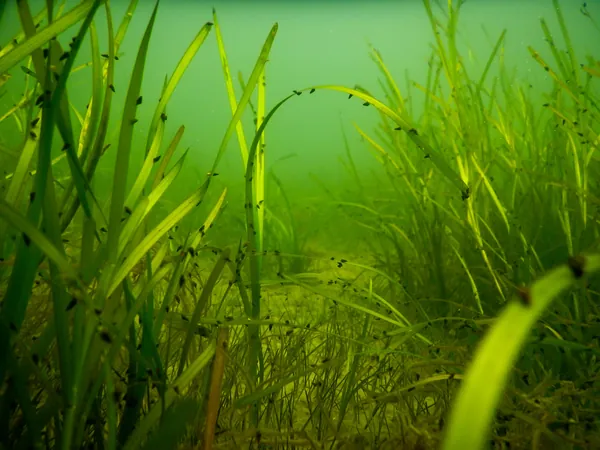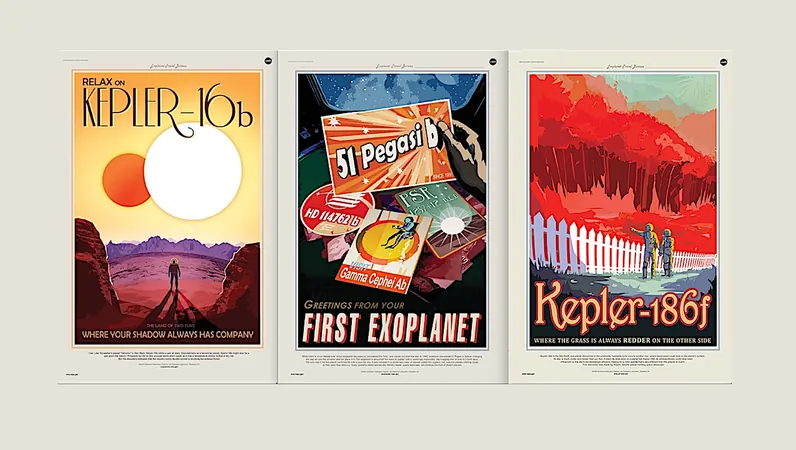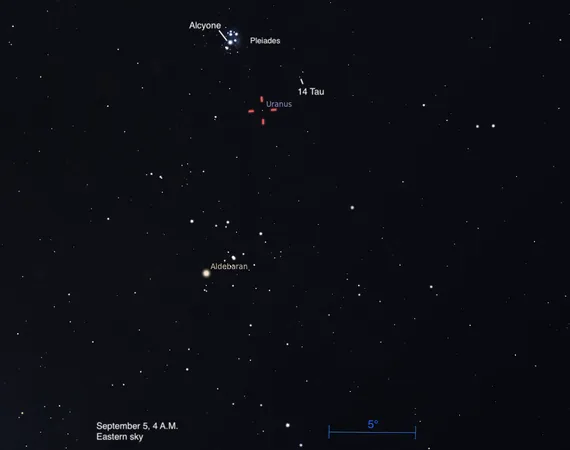
Seagrass Shakeup: How Widgeon Grass is Set to Transform the Chesapeake Bay's Ecosystem
2025-09-04
Author: Arjun
A Hidden Transformation Beneath the Waves
An unseen revolution is unfolding beneath the Chesapeake Bay as the native eelgrass is slowly being replaced by its warmer-water counterpart, widgeon grass. Groundbreaking research from the prestigious William & Mary’s Batten School and VIMS reveals that this transition could drastically alter the Bay's food web, fisheries, and overall ecosystem health.
The Shocking Findings
Published in the Marine Ecology Progress Series, the study discovered that while both eelgrass and widgeon grass serve as essential habitats, they cater to marine life in starkly different ways. Researchers project that if the current trend continues, there could be a jaw-dropping 63% reduction in invertebrate biomass in the seagrass meadows by 2060.
Associate Professor Chris Patrick, director of the Submerged Aquatic Vegetation Monitoring and Restoration Program, noted, "Multiple factors such as water quality, rising temperatures, and human encroachment are endangering eelgrass, enabling widgeon grass—more tolerant of warm conditions—to thrive, especially in the central Bay." Both types of seagrasses create distinctly different habitats that shape the communities of marine life depending on them.
When Grasses Are Not Equal
In her journey to earn a master's degree, lead author Lauren Alvaro engaged in intensive field studies within Mobjack Bay’s seagrass meadows. Her team meticulously examined the habitats made up of eelgrass, widgeon grass, and their mixed counterparts, cataloging a variety of marine species from burrowing clams and snails to diverse fish and crabs.
The results were illuminating. While widgeon grass was home to more individual invertebrates per gram, eelgrass meadows boasted larger animals and a greater overall biomass per square meter. This means that although widgeon grass supports more tiny creatures, eelgrass is crucial for larger predators like fish and blue crabs.
The Implications Are Alarming
The research team extrapolated their data, estimating Chesapeake's current seagrass meadows cradle about 66,139 tons of invertebrate biomass and yield around 35,274 tons of new animal biomass each growing season. This "secondary production" is vital as it propels animals higher up the food chain.
However, if the seagrass transition continues unabated, secondary production may plummet by over 60% by 2060 if nutrient reduction efforts do not intensify. Nutrient runoff remains the most significant threat to submerged aquatic vegetation. Even optimistic scenarios suggest a potential 15% loss in biomass.
Seeking Solutions and Preservation
"Our current study limits the ability to pinpoint whether factors like physical meadow structure or available food sources specifically drive higher fish populations in eelgrass, making it challenging to gauge fishery-level consequences of these habitat changes," said Alvaro. Yet, multiple indicators suggest a decline in both commercial and recreational fish species.
This study adds to a growing concern about ecological shifts prompted by global warming, echoing similar challenges faced in Florida’s mangrove regions and the global trend moving from coral-dominated to algae-dominated ecosystems.
As states within the Chesapeake watershed strive to bolster the estuary's health, the research team hopes to guide effective management and restoration initiatives. Safeguarding the remaining eelgrass and understanding the emerging widgeon grass could be pivotal in preserving ecological resources for generations to come.




 Brasil (PT)
Brasil (PT)
 Canada (EN)
Canada (EN)
 Chile (ES)
Chile (ES)
 Česko (CS)
Česko (CS)
 대한민국 (KO)
대한민국 (KO)
 España (ES)
España (ES)
 France (FR)
France (FR)
 Hong Kong (EN)
Hong Kong (EN)
 Italia (IT)
Italia (IT)
 日本 (JA)
日本 (JA)
 Magyarország (HU)
Magyarország (HU)
 Norge (NO)
Norge (NO)
 Polska (PL)
Polska (PL)
 Schweiz (DE)
Schweiz (DE)
 Singapore (EN)
Singapore (EN)
 Sverige (SV)
Sverige (SV)
 Suomi (FI)
Suomi (FI)
 Türkiye (TR)
Türkiye (TR)
 الإمارات العربية المتحدة (AR)
الإمارات العربية المتحدة (AR)